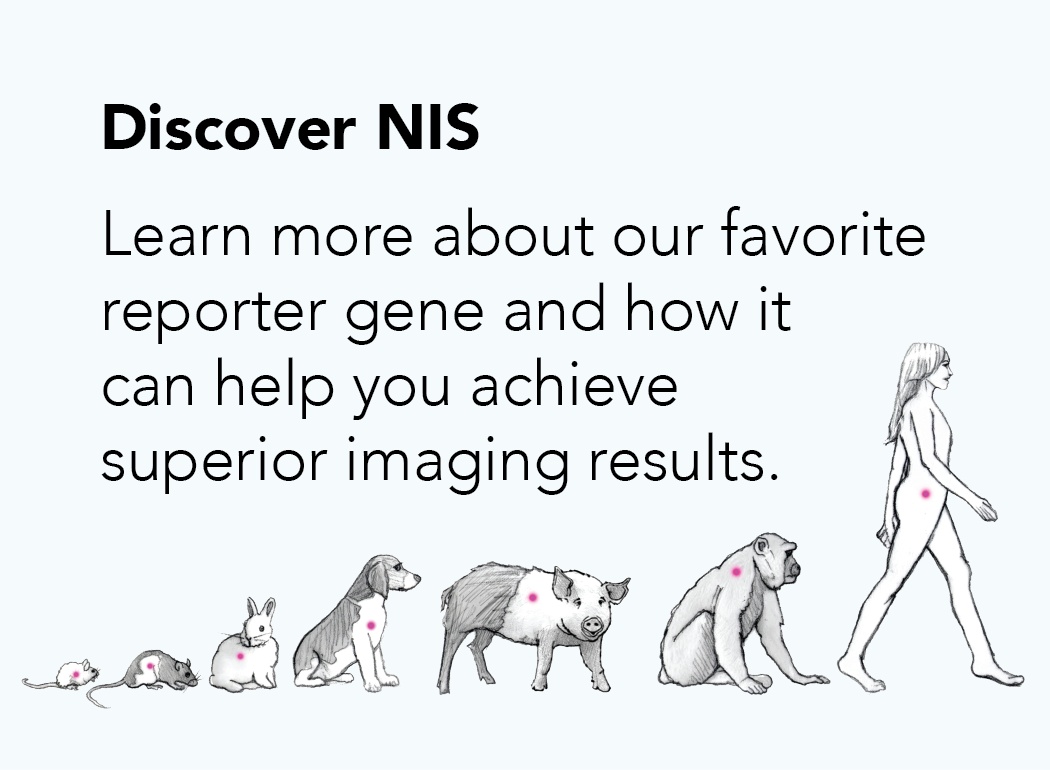Which antibiotic selection gene?
Unnatural selection: using antibiotic selection genes with reporter-expressing eukaryotic cells
Written February 8, 2017 by Imanis Life Sciences, Rochester MN
Imanis Life Sciences | Rochester MN
I grow a lot of reporter cell lines, and most of them are under antibiotic selection. Sure, it takes me more time to prepare culture media, but the tradeoff is that I have populations of high reporter-expressing cells that were a lot less work to make than if I had done clonal selection.
When to use (or not) selection
So how do you know if you should include a selection gene when making a new reporter cell line? Well, the main advantage of selection genes is that you can relatively quickly weed out cells that aren’t expressing your reporter. Without a selection gene, you are forced to be content with a mixed population of cells – that may include a lot of non-reporter cells – or to perform time consuming clonal selection and screening. In general, having a selection gene offers a distinct advantage. And even if you don’t end up using antibiotic selection, having the selection gene in your cells usually won’t impact your study.
Of course, usually is the key word. Selection genes are immunogenic. This means that if you want to put your cells in an animal, having the selection gene may cause the cells to be rejected – see my previous post about immunogenicity for more information about potential tumor rejection. Now, if you’re already using an immunogenic reporter, adding an immunogenic selection gene doesn’t change the game. But if you’re using a nonimmunogenic reporter (like NIS) adding a selection gene can make a big difference. So depending on the type of in vivo study you have planned, you may want to skip the selection gene.
What selection gene to choose
Okay, you’ve decided to use a selection gene, now how do you choose one? After all there are about half a dozen antibiotics routinely used for eukaryotic cell selection (see Table 1). Well, my personal favorite is the puromycin resistance gene. Selection with puromycin is rapid (3-6 days) and the required doses are quite small (1-10 μg/mL), which make it fast and effective. G418 is a popular choice; it works well, but requires longer selection times (10-14 days) and quite high concentrations (up to 2 mg/mL) for many cell lines. The other antibiotics and their corresponding selection genes also work well. Really, when deciding, a lot comes down to convenience. Maybe your lab already has vectors for one of the selection genes or has worked out G418 kill curves for all of the cells you use. Basically, it’s hard to go wrong when choosing an antibiotic.

Tips for using selection genes
So we’ve covered when to use selection and what gene(s) to choose. Since who is you and where is your lab, that just leaves us with how to use selection. I’m not going to go into specific protocols, but I will mention a few tips and considerations to help you get the best results.
When using selection, start with a kill curve. Doing the kill curve will help you establish a baseline for how much antibiotic is required to kill cells that aren’t expressing the selection gene. And remember, the amount of antibiotic needed varies between cell lines, so you will want to repeat the kill curve for each new parental cell line you use. To do a kill curve, incubate parental cells with increasing concentrations of your antibiotic (see Table 1 for an starting point of what ranges to try) and observe for cell death. If using an antibiotic that takes longer to kill cells, you may need to pass your cells a few times before the kill curve is done.
I like to think of selection as having two parts: selection and maintenance. For reporter cell lines with selection genes, I recommend maintaining the cells in antibiotic at a concentration that kills greater than 95% of parental cells. By maintaining the cells under selection, you ensure that the cell population continues to consist of high reporter-expressing cells. Sure, a few – and in many cases a lot of – passages without antibiotic aren’t likely to spell disaster, but hey, why take the risk. And if you’re planning to implant the cells into animals, there’s no reason to remove the antibiotic from your culture medium. Just wash and resuspend the cells in phosphate buffered saline prior to implantation. When you do want to remove the antibiotic is when preparing freezing medium or initially thawing any cells.
So that covers the maintenance part, what about the selection part? Well, for selection I recommend using a higher concentration of antibiotic. To determine an appropriate concentration you can either guess and hope that your cells don’t all die – if you guess right you just saved some time – or you can perform a kill curve on your transfected/transduced cells. Once you’ve settled on a selection concentration, grow your cells for a few passages at the higher concentration to efficiently kill any parental cells, then move them to the lower maintenance concentration. Now for those of you working with suspension cells, it can get difficult to separate dead cells out of your population during selection. For that reason, I always do clonal selection or FACs on suspension cells following antibiotic selection. And since I’ve already done antibiotic selection, I can get away with screening a lot less clones.
One last thing to keep in mind is whether you want to make double (or triple) reporter cell lines. If you are adding multiple reporters and they aren’t linked on a single construct, you will want to use a different selection gene with each reporter gene. Then make sure to select and maintain the cells in media with both antibiotics so that you are selecting only for cells that express both of your reporters.
So there you have it. Antibiotic selection is a wonderful thing. It can save you time and more importantly improve the quality of your reporter cell populations.

